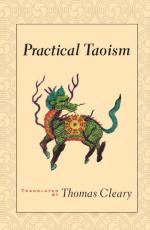|
This section contains 3,579 words (approx. 12 pages at 300 words per page) |

|
Although Daoism represents a tradition as ancient and as rich as any other major religion, the serious study of this tradition has been almost entirely a twentieth-century phenomenon and largely a phenomenon of the second half of the twentieth century at that. The reasons for this are not far to seek. From its fourth and last printing in 1445 until its reproduction by photomechanical means in 1926, the Daoist canon (Daozang), a compendium of over one thousand different works representing the full scope of the tradition, was a decidedly rare work, the jealously guarded possession of a handful of monasteries. Until the twentieth century, moreover, few outsiders would have been inclined to persist in seeking them out. To the traditional Chinese scholar, raised in the neo-Confucian belief that Buddhism and Daoism alike were little more than gross superstition, there was little reason to take an interest...
|
This section contains 3,579 words (approx. 12 pages at 300 words per page) |

|



